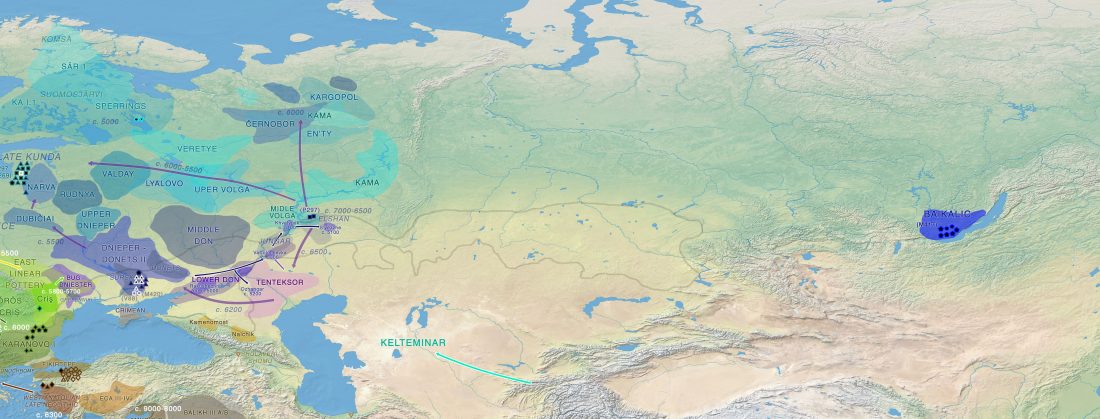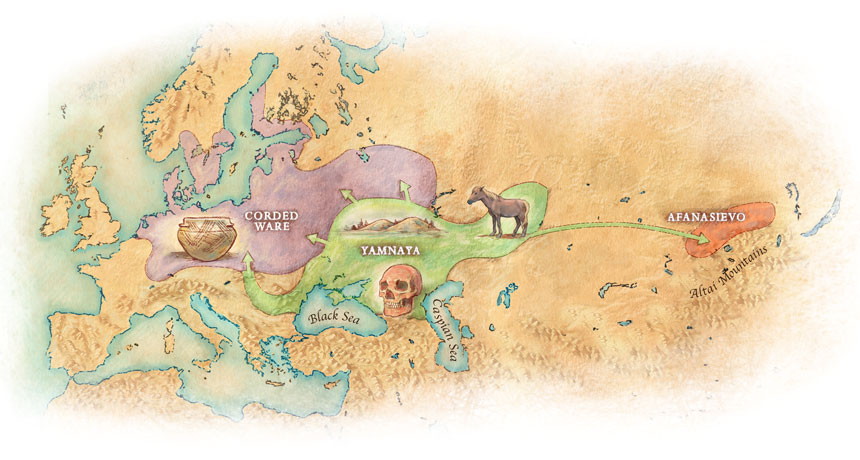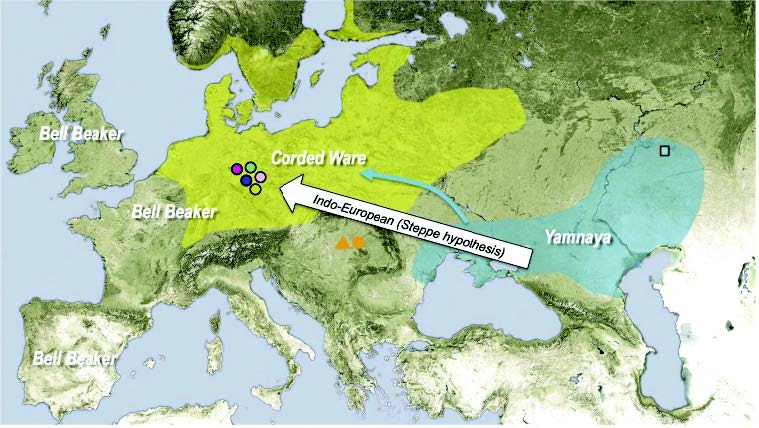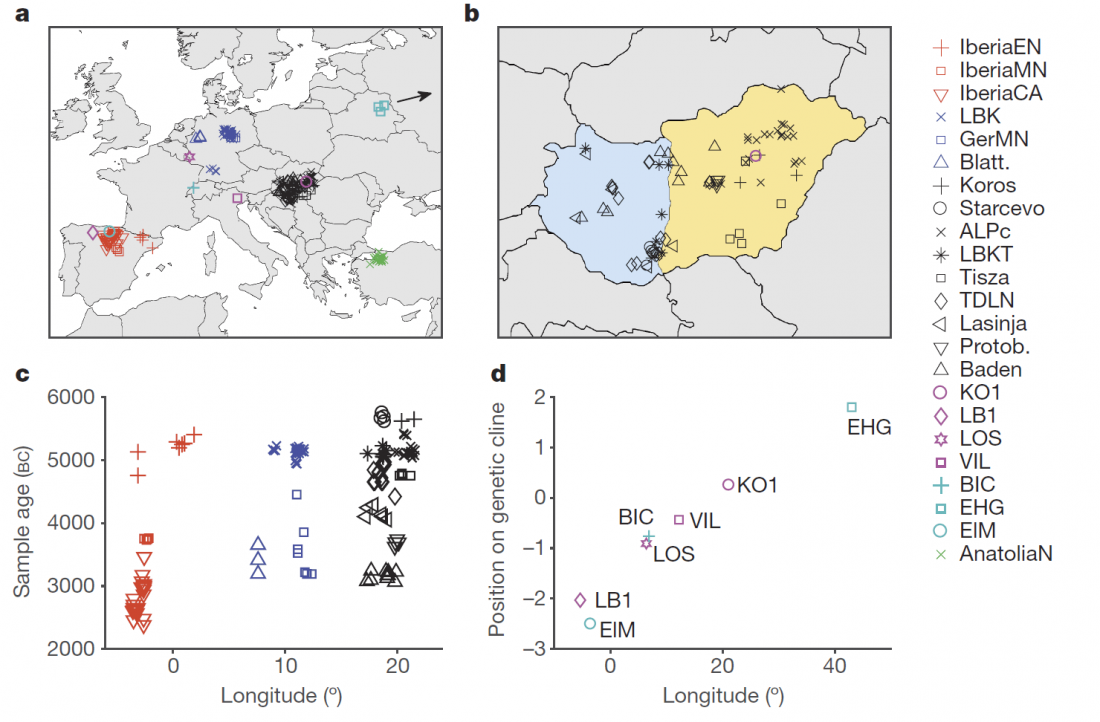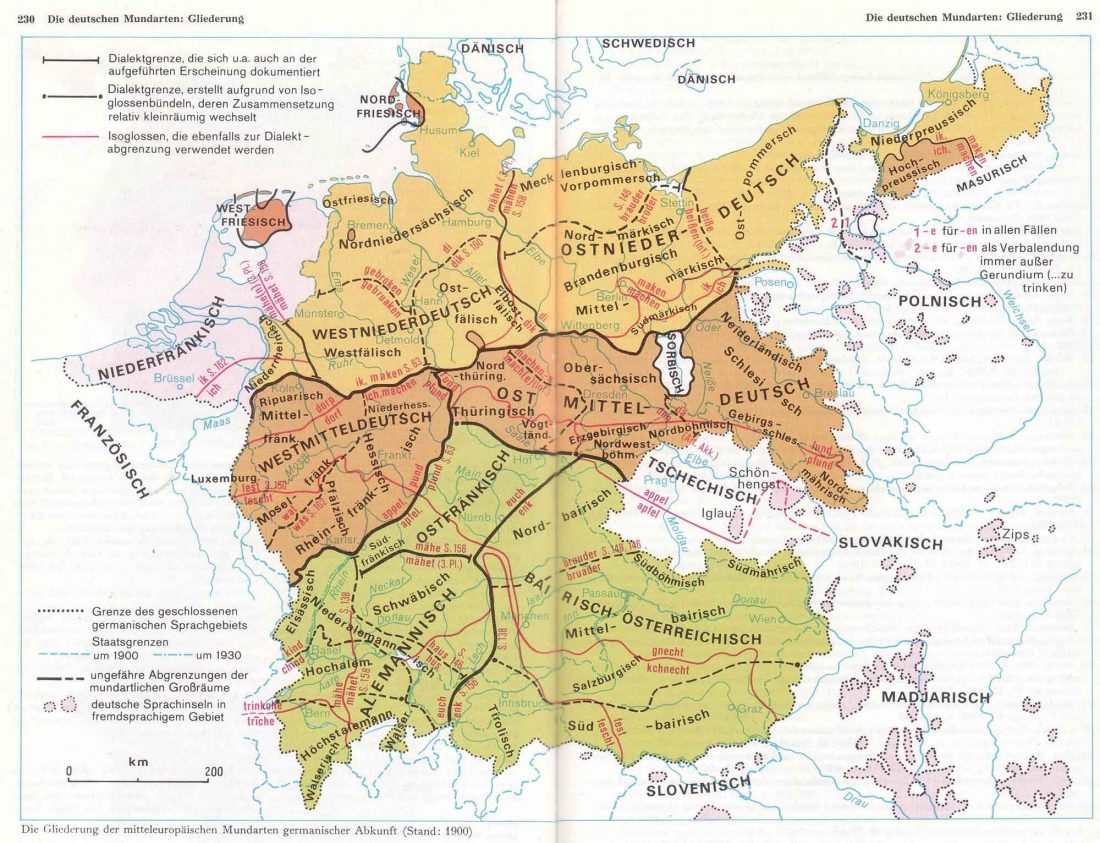Interesting preprint at BioRxiv by the team of the Reich lab, Population Turnover in Remote Oceania Shortly After Initial Settlement, by Mark Lipson, Pontus Skoglund, Matthew Spriggs, et al. (2018).
Abstract (emphasis mine):
Ancient DNA analysis of three individuals dated to ~3000 years before present (BP) from Vanuatu and one ~2600 BP individual from Tonga has revealed that the first inhabitants of Remote Oceania (“First Remote Oceanians”) were almost entirely of East Asian ancestry, and thus their ancestors passed New Guinea, the Bismarck Archipelago, and the Solomon Islands with minimal admixture with the Papuan groups they encountered. However, all
…
Read the rest “Population turnover in remote Oceania shortly after initial settlement”
Henny Piezonka recently uploaded an old chapter, Die frühe Keramik Eurasiens: Aktuelle Forschungsfragen und methodische Ansätze, in Multidisciplinary approach to archaeology: Recent achievements and prospects. Proceedings of the International Symposium “Multidisciplinary approach to archaeology: Recent achievements and prospects”, June 22-26, 2015, Novosibirsk, Eds. V. I. Molodin, S. Hansen.
Abstract (in German):
Die älteste bisher bekannte Gefäßkeramik der Welt wurde in Südostchina von spätglazialen Jäger-Sammlern wahrscheinlich schon um 18.000 cal BC hergestellt. In den folgenden Jahrtausenden verbreitete sich die neue Technik bei Wildbeutergemeinschaften in der russischen Amur-Region, in Japan, Korea und Transbaikalien bekannt, bevor sie im frühen und mittleren
…
Read the rest “The arrival of haplogroup R1a-M417 in Eastern Europe, and the east-west diffusion of pottery through North Eurasia”
I recently wrote about a good informal summary of genomic research in 2017 for geneticists.
I found a more professional review article, How Asian nomadic herders built new Bronze Age cultures, by Bruce Bower, appeared in Science News (25th Nov. 2017).
NOTE: I know, I know, the Pontic-Caspian steppe is in East Europe, not Asia, but what can you do about people’s misconceptions regarding European geography? After all, the division is a conventional one, there are not many landmarks to divide Eurasia…
It refers to Kristiansen’s model, which we already know supports the expansion of IE … Read the rest ““How Asian nomadic herders built new Bronze Age cultures””
A new article by Leo S. Klejn tries to improve the Northern Mesolithic Proto-Indo-European homeland model of the Russian school of thought: The Steppe hypothesis of Indo-European origins remains to be proven, Acta Archaeologica, 88:1, 193–204.
Abstract:
Recent genetic studies have claimed to reveal a massive migration of the bearers of the Yamnaya culture (Pit-grave culture) to the Central and Northern Europe. This migration has supposedly lead to the formation of the Corded Ware cultures and thereby to the dispersal of Indo-European languages in Europe. The article is a summary presentation of available archaeological, linguistic, genetic and cultural data
…
Read the rest “Something is very wrong with models based on the so-called ‘Yamnaya admixture’ – and archaeologists are catching up (II)”
The definitive publication of a BioRxiv preprint article, in Nature: Parallel palaeogenomic transects reveal complex genetic history of early European farmers, by Lipson et al. (2017).
The dataset with all new samples is available at the Reich Lab’s website. You can try my drafts on how to do your own PCA and ADMIXTURE analysis with some of their new datasets.
Abstract:
Ancient DNA studies have established that Neolithic European populations were descended from Anatolian migrants who received a limited amount of admixture from resident hunter-gatherers. Many open questions remain, however, about the spatial and temporal dynamics of
…
Read the rest “Before steppe ancestry: Europe’s genetic diversity shaped mainly by local processes, with varied sources and proportions of hunter-gatherer ancestry”
Last modified: 1st November 2017
AdmixTools
Install admixtools
You can do it with git (you have to have it installed):
sudo apt-get install git
git clone https://github.com/DReichLab/AdmixTools.git
(you can add at the end the folder where you want it downloaded).
There you have the AdmixTools folder.
Another option, if you don’t like git, is wget (or just download the zip directly):
wget https://github.com/DReichLab/AdmixTools/archive/master.zip
unzip master.zip
And there you have the AdmixTools-master folder.
It has to be installed from source, and I had the following packages installed – however, probably just the basic packages (GSL, lapack and openblas, in bold) would … Read the rest “AdmixTools: qpgraph, qp3Pop (f_3 test), qpBound, qpDstat, qpF4ratio, rollof”
Last modified: 1st November 2017
This section was created to facilitate access to methods of Bioinformatics and Human Ancestry for everyone. I am a neophyte myself, so don’t expect too much complexity here. Use these instructions at your own risk.
If you are interested in Indo-European studies, or any other comparative historical study that could use genetics (say, Afroasiatic studies, Sino-Tibetan studies, etc.), and have no or little background in Bioinformatics and Genetics, I recommend you to read this guide to human ancestry carefully, and practice with it. You might be pleasantly surprised to learn that, with a little effort, … Read the rest “Human ancestry”
Maybe it is my impression, and this has been going on for a long time now, but in the past few months I have received many notifications from German newspapers about increasing demands by the Polish Government for war reparations (see today, five days ago, and see some editorials on the subject by the Berliner Zeitung and Die Welt).
This might seem a quick and easy way of obtaining money for the Polish administration; after all, Greece has been trying to do that since their economic crisis, not the least because of Germany’s strong support of austerity … Read the rest “Renewed German reparation demands by Poland mean also renewed territorial disputes”

